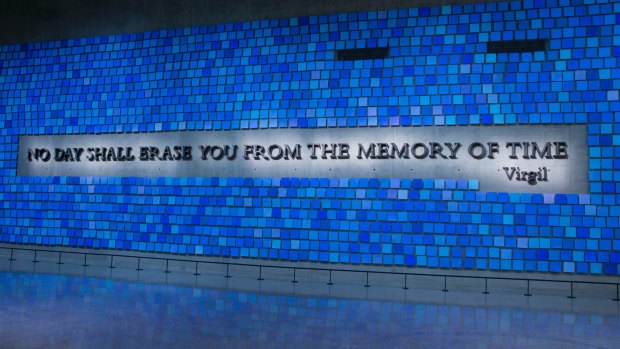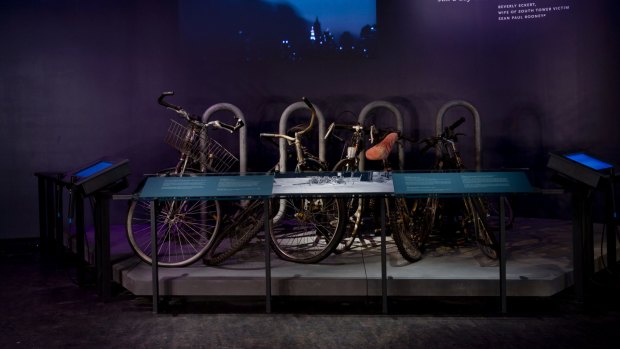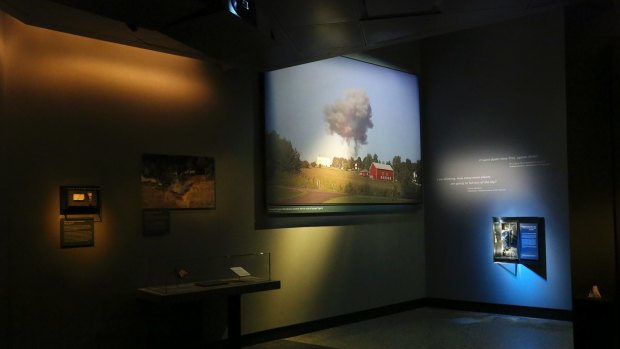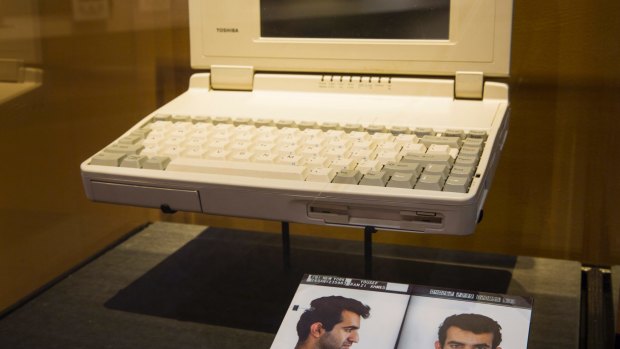This was published 5 years ago
The National September 11 Memorial & Museum: New York's chilling reminder of the event that changed travel forever
Everybody recalls what they were doing the day of 9/11. For me, I was returning to the office after having lunch with a friend in London's financial district when I saw something incomprehensible playing on a television set in the window I was passing by.
New Yorkers remember it was a day of epic, cloudless blue skies before the two planes crashed into the Twin Towers and into our collective consciousness forever.

Opened in 2014, the 9/11 Museum tells the stories of the survivors and of the 2977 victims of the tragedy. The collection includes more than 40,000 images, 14,000 artefacts 3500 oral recordings and more than 500 hours of video. As a consequence, you'll find time slipping through your fingers as you attempt to give the exhibits justice, juggling emotions and bobbing heads from the crowds of visitors.
Bring a map; the museum gets more and more detailed and maze-like the further along you go. You'll probably lose your colleagues and your sense of size and space, especially when you realise how large the museum is – it takes up the basement of the seven buildings making up the World Trade Centre that collapsed on that fateful day.
Travelling down an escalator into the bowels of the former WTC site, you travel alongside the remains of the staircase the survivors used to escape 5 World Trade Centre and the last visible structure to remain above ground level.
Wading through the highly absorbing and upsetting material could take days. Among the rotating and permanent exhibits include hundreds of missing persons posters, two fire trucks that somehow survived the collapse of the towers and the crew members that never returned to them; and an ambulance that survivors sheltered under to escape falling debris.
There's a rescued rack full of dusty bikes found close to the WTC site, only one of which was claimed. A huge piece of steel from one of the Twin Towers is suspended along a wall which was struck by a plane. There are even fragments of one of the planes that hit the towers – including a piece of the fuselage with a window.

Credit: Jin Lee
Survivors tell in voice recordings how they made their escapes, including the remarkable story of how one woman escaped the North Tower (Tower 1) from several storeys higher than where the plane struck. There are voice recordings of people left on answering machines from the South Tower calling home while watching the North Tower burn.
There are incredible image galleries that include the haunting image of "the woman in the hole" around the 97th floor of the North Tower where the plane impacted.They're pretty sure it's Edna Cintron, who worked with the insurance brokers Marsh & McLennan, but have never been able to prove it.
There's chilling footage from the camera crew who happened to be trailing a unit of the fire department that day and got footage of them heading into the North Tower to help with rescue efforts. The firemen never made it out.
But perhaps one of the most moving parts of the museum (and there's a strategically placed tower of tissues at the front) – is a minute-by-minute video detailing Flight 93's crash in Pennsylvania. The crew, knowing the plane had been hijacked, decided to turn on the hijackers themselves. Voice recordings made by flight attendants and passengers to their loved ones back home had been captured on answer machines as their calls went unanswered, explaining what they were going to do, stoic and calm in the face of certain death. The recorded voices of the hijackers are also played, saying "Should we end it now?" and "Cut off the oxygen!"

Credit: Jin Lee
Then comes the fallout of the towers' collapse: the ambulances and hospitals that readied for thousands of incoming injured people that never came; how bystanders died from falling glass or other objects from the towers.
There's a section dedicated to how it affected people who lived in the part of Lower Manhattan that was turned into a wasteland after the collapse, their apartments destroyed by dust and deluge. And how people continue to die from the fallout of the attacks as toxic substances emitted from the crash have caused 70 different cancers and other illnesses, particularly in those involved in rescue efforts.
There's also a section dedicated to the terrorists who carried out the attacks, which explains how the attacks sprung from the original bombing of the WTC in 1993. There's even footage of the terrorists getting through security at one of the airports.

A laptop belonging to terrorist Ramzi Yousef.Credit: Jin Lee
While visitors shuffle shoulder-to-shoulder through exhibit rooms, there's a pervasive quiet, with the unmistakable sounds of people struggling emotionally with the scenes throughout the museum. It's grim, but essential viewing; an experience that helps satisfy a need for knowledge and understanding of the event that forever changed the way we travel.
The writer was a guest of NYCgo, nycgo.com
Sign up for the Traveller Deals newsletter
Get exclusive travel deals delivered straight to your inbox. Sign up now.